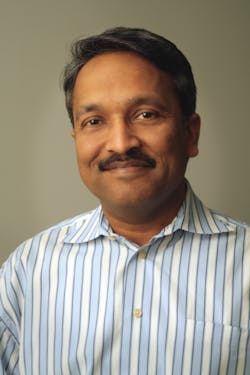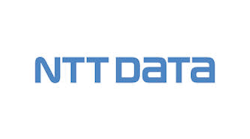Today, more than 54 percent of the world’s population lives in urban areas, a number that is expected to increase to 66 percent in the coming decades. This results initially in higher urban density, followed by urban sprawl as people and businesses expand beyond the initial city boundaries. Such urban growth and sprawl results in a society with considerably more vehicles on the roads, amidst an increasing demand from commuters for faster and alternate transportation channels. We can all relate to experiencing more congestion, increased accidents and road construction, all of which are also resulting in safety issues and increase the amount of time the average person spends commuting. Traffic congestion wastes energy, contributes to global warming and costs individuals and businesses time and money.
Using mobile applications, users are promised real-time travel information in order to reach a destination in an efficient amount of time. Yet, even using map applications many people still find themselves spending an inordinate amount of time in commute due to traffic, accidents and other disruptions. Cities are also increasingly forced to compete amongst themselves to attract residents and businesses and be considered a more desirable place to live and work. A city’s transportation and communication infrastructure is an important consideration that has direct and indirect economic impacts for government, businesses and residents.
To meet rising demand, cities require infrastructures and systems that are connected, energy-conscious and intelligent enough to quickly react to everyday traffic situations. This includes supporting machine-to-machine interactions that allow travelers to quickly reroute their trip or plan to take alternate transportation, should a disruption arise. Critical to achieving this is a strong foundation of information and communications technology (ICT), and resource management systems that operate under a supportive policy framework and enable an expanded public-private cooperation. This communication infrastructure needs to support reliable high-speed transmission of vast amounts of data and enable communication across people, organizations and systems. For example, intelligent traffic management systems that use wirelessly managed traffic lights at interchanges to help reduce congestion require a robust infrastructure that permits them to transmit large volumes of signal and video data to traffic control centers.
Mobile technologies today are already enabling residents to quickly inform and be informed of traffic situations and patterns that are emerging during their commute. In a traffic incident or natural catastrophe situation, mobile technologies provide a means for interactive exchange of information and quick guidance and action from other parties, such as medical and law enforcement organizations and insurance companies. With intelligent transportation systems that can be used for traffic management and are available on a cloud platform, even smartphones can be used to manage the traffic system at any time.
What’s next? Enterprise IT is beginning to assess current traffic situations through the use of GPS probe data, such as geo-location and speed, and use that to forecast and simulate the future movement of vehicles. The results can then be used to change and control how frequently traffic lights change, and so help alleviate congestion.
Additionally, the problem of “infrastructure crises,” which causes serious situations like the disintegration or collapse of aging infrastructures, is also becoming acute. In the United States, there are about 600,000 bridges of which 27 percent are deteriorating. Thus, the maintenance and management of infrastructure is a pressing issue. At an operational level, governments also spend significant funds and efforts to maintain roads. Road diagnostic techniques that are efficient and low-cost are in high demand, because the maintenance and control of road pavement requires huge costs and has reached a point of almost necessity in recent years. Sensing technology plays a significant role in solving this problem, and experiments of technologies that detect infrastructure distortion have been carried out in recent years.
A system can be developed that evaluates the pavement surface conditions of roads through an application that leverages an iPhone’s angular velocity sensor, acceleration sensor, images and audio. Utilizing this in a car in conjunction with a measurement application, the evaluated result can be projected on maps such as on Google Earth, and road surface conditions can be visually checked. The spread of such software will also make possible open-road monitoring at a lower cost through iPhones in many cars.
The Internet of things (IoT) is upon us and holds tremendous potential to solve real-life transportation problems and improve productivity for individuals and government as a whole. With advancements in mobile and communication technologies, the scope of sensor data applications will expand from houses, buildings, and infrastructure to cities. The future age will be one in which the superiority and inferiority of each agency or organization or an entire city to solve their challenges will increasingly depend on its ability to harness, analyze and govern data as a strategic asset.
Even as we solve transportation challenges using mobile devices and intelligent transportation systems that leverage IoT, it is imperative to focus on the communication infrastructure and data management architecture to maximize the benefits of the various systems already existing or soon to be introduced to an environment. In parallel, the world will shift from individual optimization to total optimization across a connected ecosystem. Our ability to use IoT to create problem solving insights or ideas will be determined by big data technologies that can convert and visualize large amounts of data in a format that is easily understood and applied to our daily lives.
Ashwini Chharia is a senior director within the Public Sector Services division of NTT DATA.




